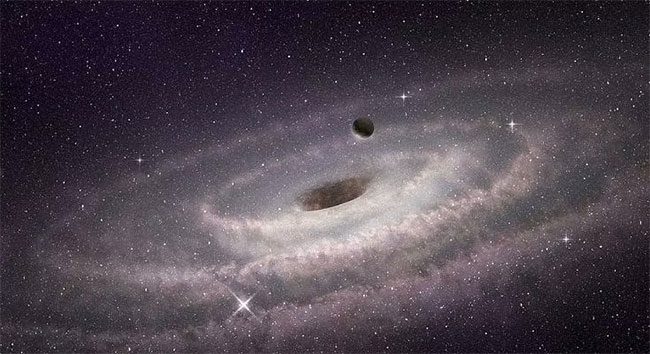Researchers Discover Unusual Black Hole Less Than 5,000 Light-Years from Earth
According to Yahoo News, astronomers have discovered and measured the mass of this black hole over the past few years. They published their findings in a new study.
Previous research suggested that when giant stars reach their final stages, they often die in catastrophic explosions known as supernovae, and their dense cores collapse to form black holes.

Supermassive black hole at the center of a spiral galaxy. (Photo: BRG)
Stars that are large enough to create black holes are estimated to make up about 1 in 1,000 stars, suggesting that there could be around 100 million massive black holes in the Milky Way.
Previously, all black holes we had discovered were part of binary systems. However, the discovery of an unusual black hole could open up new mysteries surrounding these cosmic entities.
The scientists found this black hole approximately 5,000 light-years from Earth. It is located in the bulge at the center of our Milky Way galaxy.
Astronomers first became aware of this black hole in 2011. At that time, researchers observed an event that could be microlensing. Essentially, microlensing events occur when the gravitational force of an object bends the light from a star. This phenomenon is often seen around black holes as they pull the light from nearby stars toward them. Microlensing events can also appear around stars or white dwarfs.
After the initial discovery, astronomers began monitoring the microlensing event, searching for new clues about its cause. Over six years, researchers tracked changes in light, hoping to see the black hole they suspected was present. However, they also noticed that the position of the star seemed to change.
This led the research team to believe that a passing object was causing the changes. They continued to monitor and observe these changes and ultimately ruled out microlensing as the cause of the light variations.
Instead, everything they found led them to believe that an unusual black hole might be the cause.
The reason this unusual black hole has attracted so much interest is due to its implications for our understanding of current black holes. Previous discoveries have indicated that black holes are typically found in binary systems.
Thus, seeing the black hole itself without a star carries significant meaning. It could imply that there are other black holes out there that we have yet to observe.
However, knowing that such black holes exist is only part of the challenge. Researchers will still need to search for them, which can be extremely difficult since black holes are often dark. The primary reason researchers were able to detect the aforementioned black hole was due to changes in light from the stars surrounding it.


















































